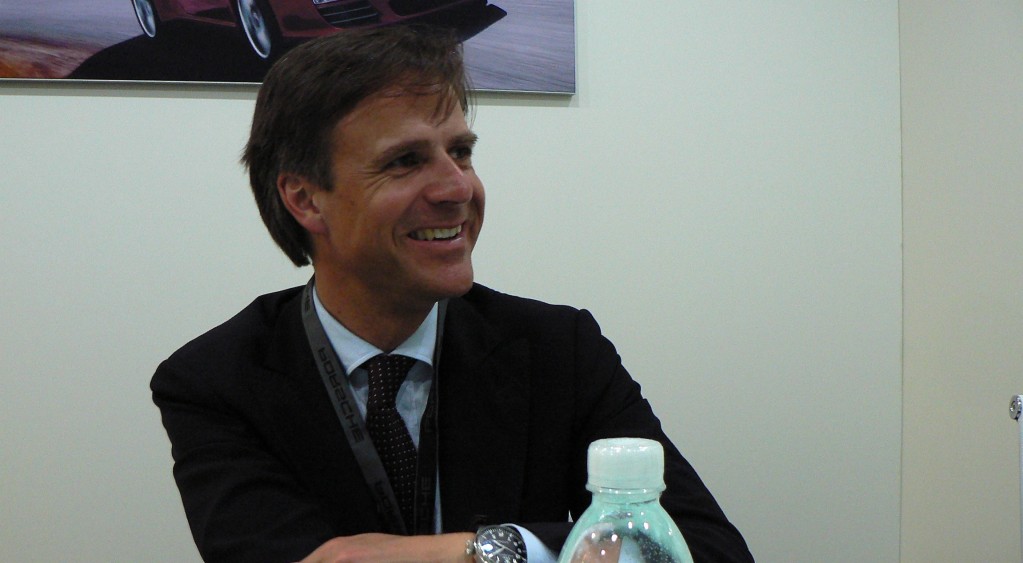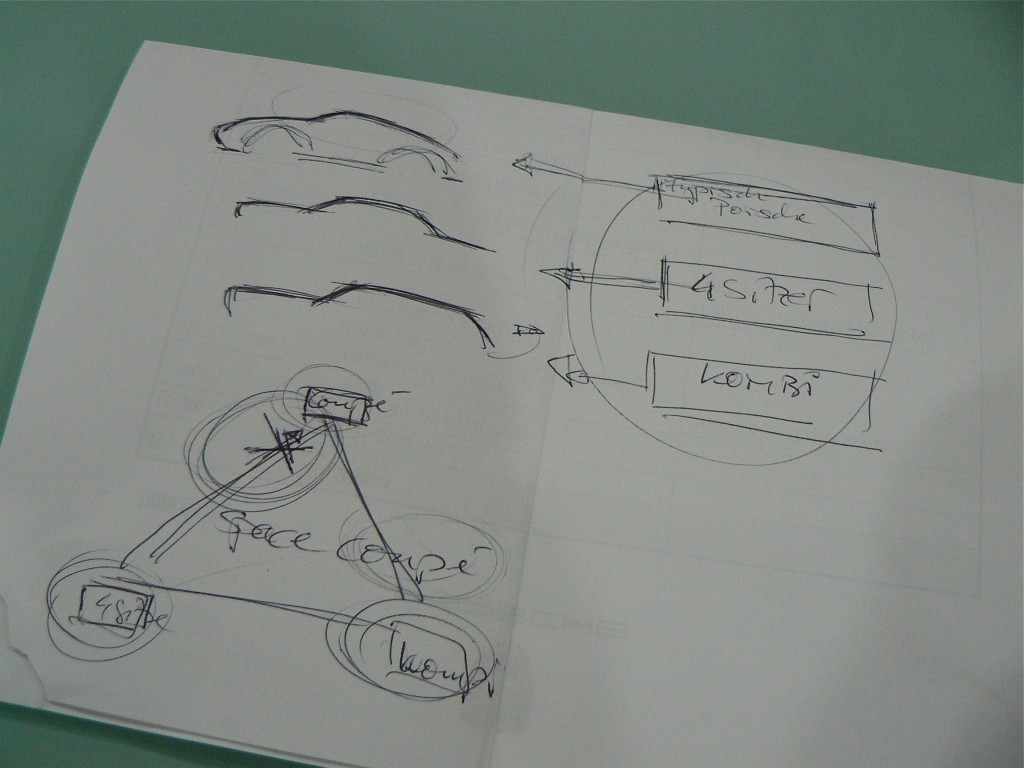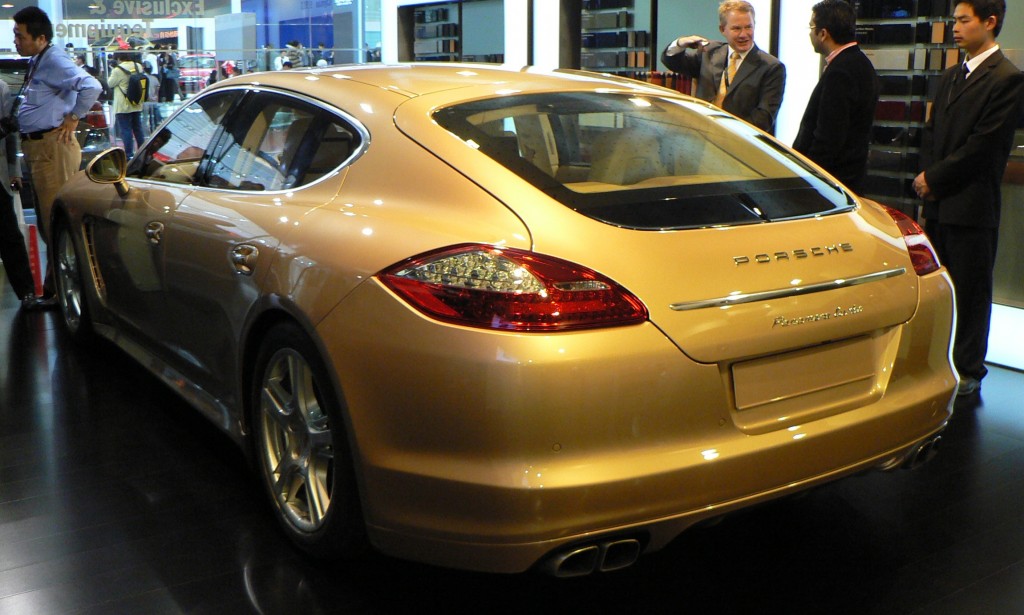Interview: Porsche design head Michael Muaer
Story and photos by John LeBlanc
SHANGHAI – Porsche is striking out into virgin territory. Not only is the company debuting a car for the first time outside of Europe or North America here at this year’s biennial Shanghai auto show, the vehicle in question—the 2010 Panamera Gran Turismo—is a totally new type of vehicle for the German automaker.
Even among its targeted rivals (Mercedes-Benz CLS 63 AMG, Maserati Quattroporte or forthcoming Audi A7 and Aston Martin Rapide) the new Panamera is unique—a four-seat luxury high performance hatchback.
Responsible for the task of melding the high performance driving expectations of any Porsche with the equally expected luxury and accommodations in this segment, is the automaker’s Director of Style, Michael Mauer.
After stints with Mercedes-Benz, Smart and Saab (where he respectively penned the first-generation SLK, Smart Roadster and several Saabs concepts) the 2010 Panamera GT is Mauer’s first comprehensive Porsche design since joining the company in 2004.
We just hours after the Panamera’s official world premiere here at this year’s Shanghai auto show:
LEBLANC: Obviously there’s a wealth of design elements to pull from Porsche’s long and extensive sports car catalog. But where did you get the inspiration for the Panamera’s new and distinctive form?
MUAER: When we were designing the packaging of the car, we wanted to have proportions that would remind you of a sports car. With this requirement, we fixed the general layout of the car. In the end, the Panamera’s width to height ratio is even more dramatic than it is on a 911—way more dramatic than its competitors.
Was there a particular packaging requirement that challenged your goals from a styling standpoint?
[Mauer pulls out a sketch of a trio of car profiles: coupe, sedan and wagon] First, we wanted to have a coupe-ish look of a sports car. Two, it had to be a real four seater. That’s important. Because it gave us much more freedom. Finally, we wanted to have the utility and flexibility of a wagon. So then you end up with a hatchback. And we were very clear of the fact that the size of the Panamera, in comparison to the competitors, should be the most compact car in respect to the interior room.
So… four seats, with enough headroom and enough space for the luggage, hatchback, and below five metres in length. A mixture of requirements that—I would not like to say it was headache—but definitely a real challenge.
Why is the Panamera a four seater and not a five seater?
If you look at the competitors, you would not like to have to spend two hours on that fifth seat in the middle.
There’s aggressive side bolstering on the two rear seats. They seem almost identical to the buckets the front occupants sit in.
Yes. From a design point of view—even if we were going to do four seater—we didn’t want to just copy, say, a Mercedes S Class. [The Panamera] is a Porsche. That means first, the look has to be more sporty. That means when people are sitting in the rear seats, they can expect the drive to be more sporty around the corners.
One of the Panamera’s new technical features is its so-called “active aerodynamics. It includes a rear spoiler that deploys from the edge of the rear window line. How much work was it to get that piece of engineering to fit in with your design goals?
You could say this detail shows how much the other [Porsche] divisions were willing to help the design department. You have a car that, in terms of performance, is almost over the top. And because of the round design language at the rear of a Porsche, you need a spoiler for stability. Plus, the design requirement was that it was not visible when the car was standing still.
The Panamera is Porsche’s first all-new vehicle since the Cayenne in 2002. Where does it sit in the evolutionary path of Porsche’s design strategy?
From a strategic point of view, we believe in the evolutionary development of our design language. The latest model is always the next step, and is also giving some hint how things will develop.
So for the Panamera, I would say it’s a typical Porsche when it comes to the basics of the design language, but there are also new elements.
If you look at the treatments of the surfaces, they are a little bit more crisp. If you look at the rear fender—that’s why I like it so much—you have this highlight on top. Maybe the step on the interior is even bigger, saying this is something new, a starting point for Porsche interiors.
This is your first Porsche. How does it feel to have it out of the design studio?
In a way, it’s a relief!
I knew from the very start, that, since this a new concept that hadn’t been out there—especially in this segment—it would be heavily discussed. That there would be some people—hopefully not too many—that wouldn’t like the design. But I think that, at the end of the day, this is even better than if most of the people would like it.
I have to admit, I’m really into the internet comments. I can’t ignore this. I have read some negative comments from people who saw the car only in pictures. Then, they are surprised that in reality, it looks much better.
Is the unique shape of the Panamera something the pubic is going to have to get used to?
I’m sure some people expected us to do some kind of Maserati Quattroporte type of car. Others expected us to do an Aston Martin Rapide. I don’t know. Maybe even a Mercedes-Benz CLS, or whatever. Instead, we did a little out of the box thinking. But Porsche’s philosophy is not to do something different for the sake of being different, but to do something better.








![[del.icio.us]](https://www.straight-six.com/wp-content/plugins/bookmarkify/delicious.png)
![[Digg]](https://www.straight-six.com/wp-content/plugins/bookmarkify/digg.png)
![[Facebook]](https://www.straight-six.com/wp-content/plugins/bookmarkify/facebook.png)
![[Google]](https://www.straight-six.com/wp-content/plugins/bookmarkify/google.png)
![[Reddit]](https://www.straight-six.com/wp-content/plugins/bookmarkify/reddit.png)
![[StumbleUpon]](https://www.straight-six.com/wp-content/plugins/bookmarkify/stumbleupon.png)
![[Twitter]](https://www.straight-six.com/wp-content/plugins/bookmarkify/twitter.png)
![[Email]](https://www.straight-six.com/wp-content/plugins/bookmarkify/email.png)